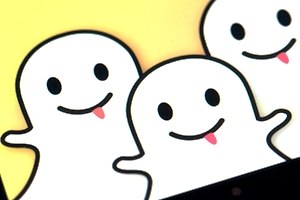 Just when brands get the hang of a new digital platform, they are introduced to another—or at least a whole new function of an existing one.
Just when brands get the hang of a new digital platform, they are introduced to another—or at least a whole new function of an existing one.
Snapchat is a great example. Once it was viewed as a simple photo-messaging app, but the increasing uses of the platform indicate those days are long over. Just look at some of the numbers behind the app:
Its user base is huge. Snapchat boasts 10 billion video views per day, and over 60% of all smartphone users have the Snapchat app installed. The app grew from 2 billion to over 12 billion daily views in one year, and in a matter of five years it has grown to be one of the largest social platforms in the world.
It's holding people's attention and capturing share of usage from other social platforms.Consumers average 25-30 minutes on the app per day, and 50% of its users are on the app every single day. Snapchat's 150 million daily active users also surpasses Twitter's 140 million daily users.
It has cross-generational appeal. More than 50% of new daily users are 25 and over, debunking the notion that Snapchat is for teens and Millennials only. The 25+ crowd is flocking to Snapchat at twice the rate of users age 24 and below.Basically, Snapchat is a marketer's dream. And most brands do acknowledge that they should be on the platform, especially given the jaw-dropping stats behind its growth and usage. However, being on the platform is much different from using it in their marketing. Because of that, brand adoption has been slow, and it seems that many marketers don't know where to begin with Snapchat.
The marketers that win Snapchat will be the ones that don't lump it into the general social media category; that's because its many nuances make it much different from Facebook, Twitter, and Instagram. It's new and unique, and it's not at all like those three.
If brands try to incorporate Snapchat into their marketing mix by using the content and strategy they use for Twitter, Facebook, YouTube, or Instagram, they risk failure. That's because Snapchat is causing a pivotal shift in the marketing landscape, in at least three ways.
1. The Rise of Expiring Content
One of the most unique traits of Snapchat is expiring content. Allowing content to expire, or to disappear after a specified amount of time, goes against the instincts of most marketing experts. Why create something just to have it disappear?
However, allowing content to expire produces a sense of urgency in consumers. It is the ultimate call to action.
Snapchat was able to explode onto the social platform scene by providing that unique concept—one potentially successful enough to allow it to rebuff a $3 billion buyout offer from Facebook. And Facebook is feeling the pressure to keep up; the social media giant recently debuted an expiring story option on its Instagram platform, and it is reportedly experimenting with some Snapchat-like features, such as face lenses and images that disappear after a certain amount of time.
Now brands need to figure out how to provide content that works within an expiration date, content that acts fast and engages quickly, before short attention spans lead consumers to move on to the next thing.
2. Exclusivity
Consumers want access to brand information that other users don't have. Expiring content highlights exclusivity and works amazingly well with the concept. Users can't share what no longer exists, meaning the content is exclusive to Snapchat users. That fact heightens consumers' sense of urgency and feeds their curiosity. If they can't get it anywhere else, they're going to keep coming back, as often as possible, to see what's new.
Limited-time or one-use Snapchat filters are another tactic that, when used properly, can be instrumental in promoting deals or special offerings or pushing greater brand awareness. Consider Taco Bell's Cinco de Mayo Snapchat filter. A simple and seemingly silly concept—turning the consumers' head into a giant taco shell—became the most-viewed campaign in Snapchat history, with 224 million views in one day.
3. Genuineness and relatability
Today's customers can sense being marketed to from a mile away. They want to form a closer relationship with the brands they use. Snapchat content is unlike Instagram or even Facebook in that it doesn't emphasize a curated aesthetic. It tends to be much more raw and spontaneous, playing on the impulses of a generation of consumers who are increasingly OK with showing moments that haven't been staged for social media. Brands will absolutely need to keep their content simple or genuine to better relate to their target audiences.
Now is the time for brands to capitalize on the unique offering Snapchat provides. It can offer something new and creative to audiences that are being bombarded with brand messages everywhere they turn. And that novelty is an invaluable advantage in today's competitive landscape.
No comments:
Post a Comment